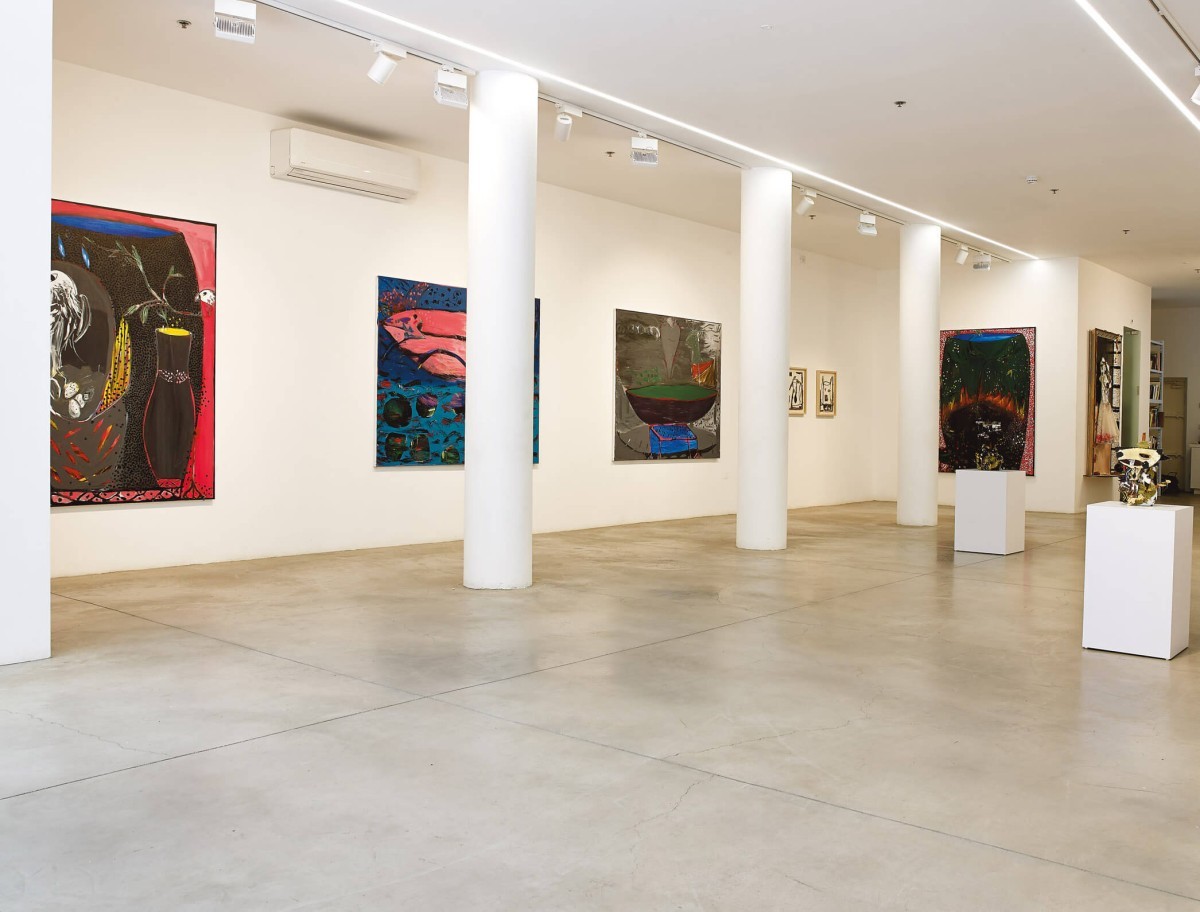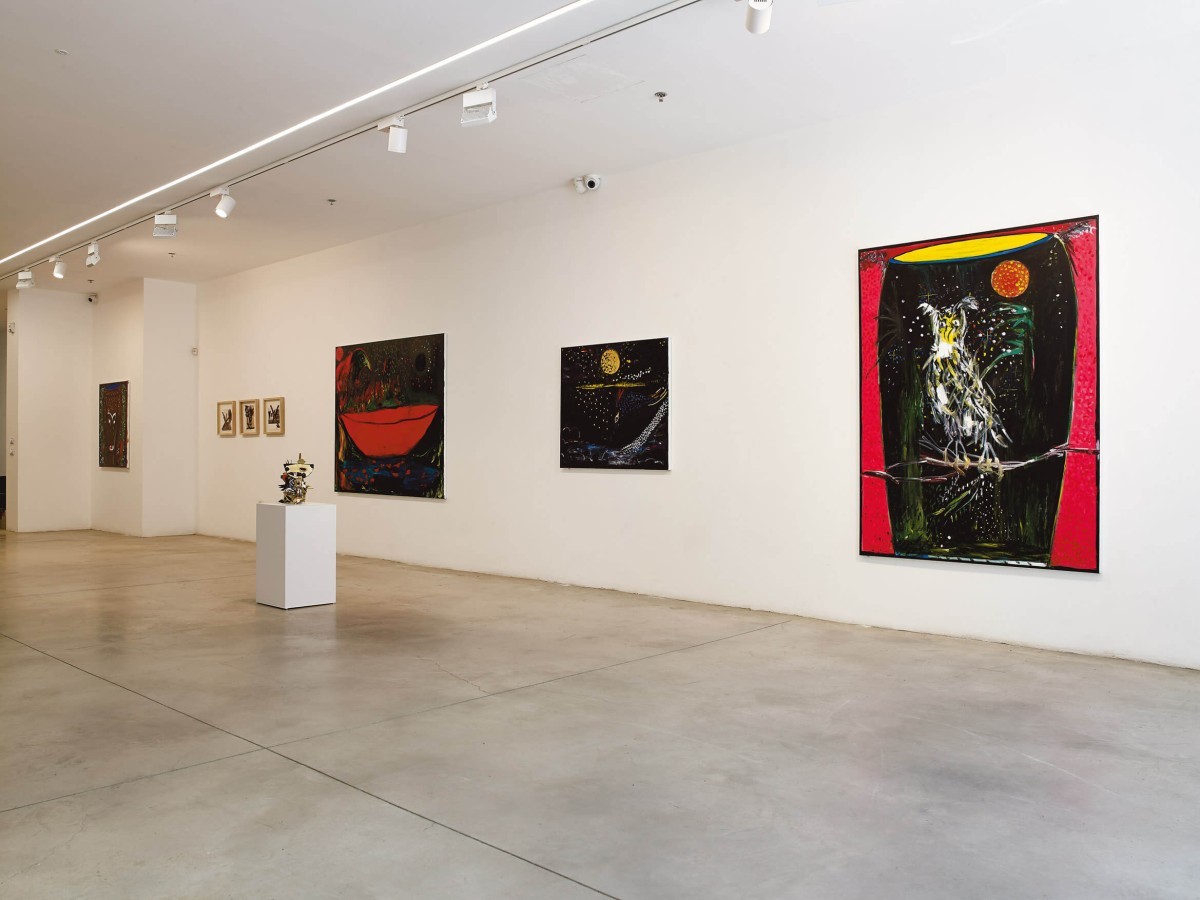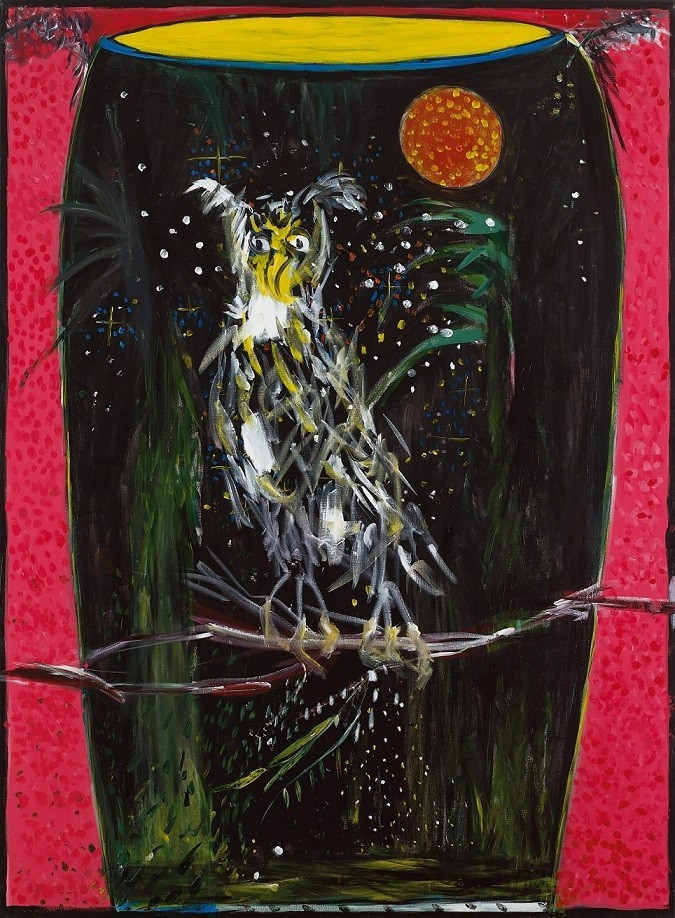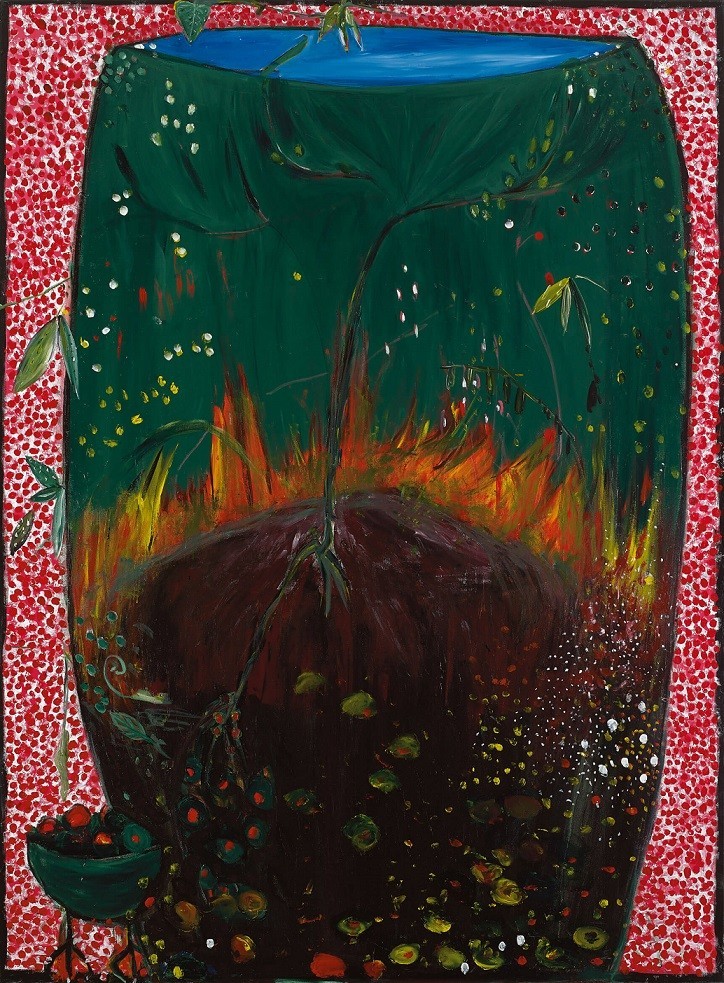
Khen Shish | Brown Eyes Darling
Curator: Tali Ben-Nun
20.04.23- 03.06.23
Khen Shish’s new works are a revved up painterly spectacle. On large canvases, using body gestures, her hands, her fingers, a brush, or painting straight from the tube, she presents an overflowing, multilayered, spectacular and insatiable painting. Like a chameleon, she moves between expressive, physical, sensual, stormy painting, and painting that is meditative, conceptual, drawing-like, reductive. In the current exhibition, the black-white-pink-gold color range, quint essentially identified with Shish, opens up and expands.
The large-scale paintings are juxtaposed with smaller paintings, rebellious offspring which ostensibly stick their tongues out at the former, make faces at them. In these works, Shish depicts direct, frontal images resembling personified portraits with simplicity and humor. Vis-à-vis the artist’s desire to return to monumental painting, clearly evident in her current body of work, the small paintings act as biting footnotes.
Over the years, Shish has established a distinctive visual lexicon comprising iconic motifs and images, which she adopted and honed, making it her painterly signature, the Shish language: an eye, a tear or a drop, a boat, a leaf, a heart, a curl of smoke, a vase, as well as animals, different kinds of animals. The figure of the animal in her paintings has become an instrumental means fusing the biographical and the imaginary; a mythical channel that functions as an alter-ego, adding a theatrical, sometimes surreal stratum, in which the beastly and the human, the disciplined and the pre-domesticated, rub against each other.
In a series of paintings portraying giant vases, larger and taller than the artist herself, Shish alludes to influences from the Far and Near East: an almond branch, a gold decoration, a bird guarding her eggs, a landscape going up in flames. Each vase-painting may be construed as a monologue, a fragment from the artist’s private mythology. Similar vases, filled with gold coins, were embedded in the walls of the stone houses on the island of Djerba in Tunisia, the birthplace of Shish’s mother. These vases were often forgotten and discovered randomly during renovations when the walls were torn down. A treasure at home. Vases have already appeared in Shish’s paintings in the past; they disappeared for a while, and now they are back. The vases carry the painterly scene. The surface of the vase on the surface of the canvas. A painting within a painting. They, too, hold a treasure, a souvenir of a language imprinted in the artist, a memory of traditions and stories passed down orally.
Another recurrent image in Shish’s extensive oeuvre is the boat. A boat below and a boat above, and together an eye: oval, halved, cut, tearing; an eye-boat swinging on the edge of a mast above a non-sea. Shish’s boats sail on calm seas; they are abandoned in the middle of the ocean, stuck at shore, or placed like a sculpture on a pedestal. Where are they headed? A boat, a vase, a bird’s nest—containing receptacles—transform from representations of applied art into archetypes within stories, memories, and yearnings; day paintings and nocturnal paintings interspersed with stars.One work seems to cast a foreign shadow on the others. A portrait of a lion-tree-man in warm, earthtones, semi-figurative, semi-abstract. Perhaps it is the portrait of the tribal elder. A thick mane blends with a thick beard with branching roots. The head of a tiger bursts forth from the right eye. A cascade of cut eyes, glued to the canvas, falls like leaves, like tears, like scaly armor.This omniscient figure conveys Shish’s quandaries about nature — beastly nature as well as the nature of painting. What is the source of its power? What is its language? What breeze blows in the space between the painting, the painter, and the viewer? Who breaks down the wall or find gold in a vase?
Perhaps, like a mirror image, the portrait is a reflection of the artist, the all knowing narrator, the shaman of painting.
Tali Ben-Nun



























